Syria Flag Meaning
Three horizontal stripes of red, white, and black with two green five-pointed stars on the white stripe, representing the Pan-Arab colors of liberation struggles, the Hashemite flag heritage, and the Ba'ath Party's Arab socialist ideology that has governed Syria since 1963.
- Continent
- Asia
- Adopted
- 1980
- Ratio
- 2:3
- Colors
- red, white, black, green
- Designer
- Unknown
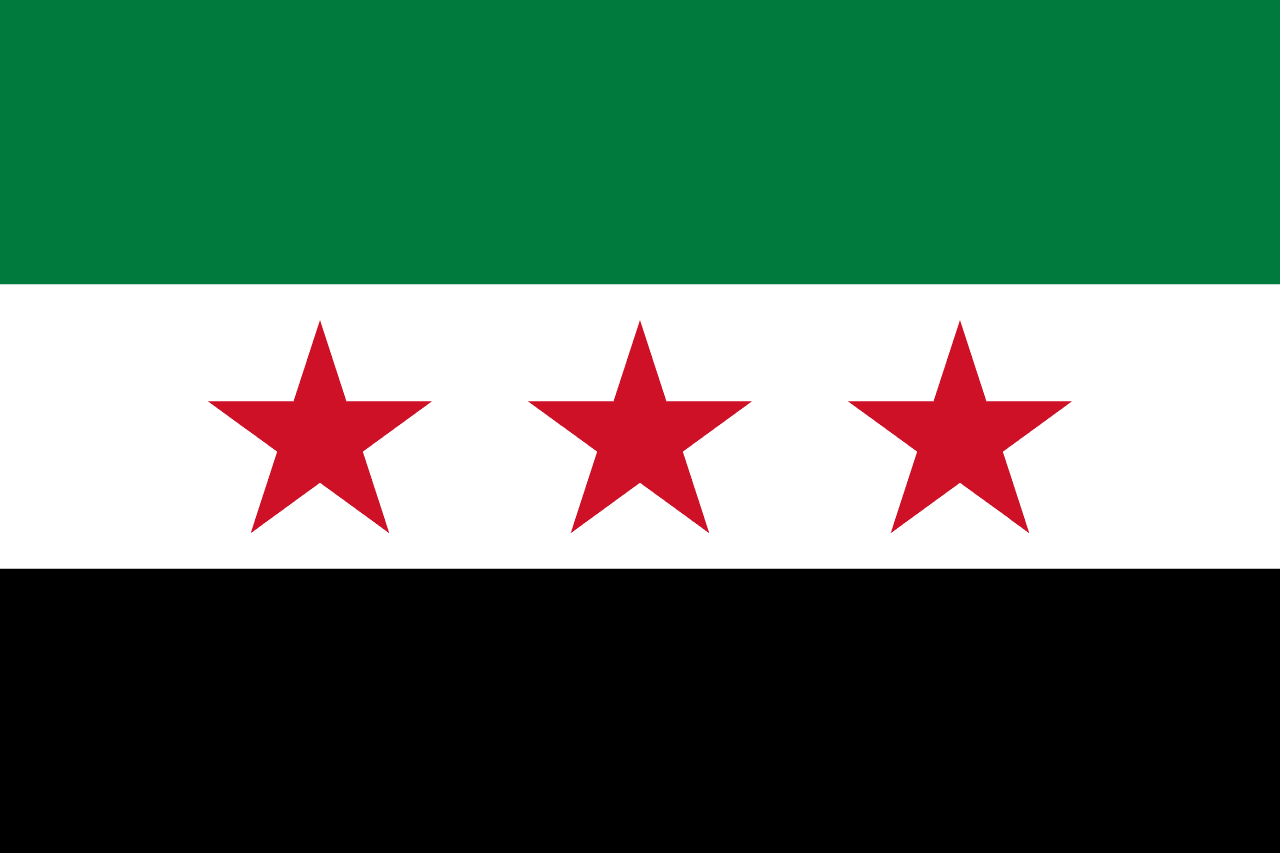
Symbolism
Red Stripe: Represents the blood shed by martyrs in the struggle for Arab independence and liberation, symbolizing the sacrifices made by Arabs throughout history to achieve freedom from foreign domination.
White Stripe: Represents the bright and peaceful future of the Arab nation, symbolizing purity of intentions and the hope for prosperity and harmony among all Arab peoples.
Black Stripe: Represents the dark past of oppression under foreign rule, symbolizing the period of Ottoman decline and European colonialism that Arabs sought to overcome through nationalism.
Two Green Stars: Originally represented Syria and Egypt during their union as the United Arab Republic (1958-1961), later reinterpreted to represent Syria and its commitment to Arab unity and Islam.
Pan-Arab Colors: The flag uses the traditional Arab liberation colors inspired by the Great Arab Revolt against Ottoman rule, connecting Syria to the broader Arab nationalist movement.
History
- Ancient Times: Syria was home to some of the world's oldest civilizations, including Ebla, Mari, and Ugarit, and served as a crossroads between Mesopotamia, Egypt, and Anatolia for millennia.
- 64 BC-636 AD: Roman and Byzantine rule brought Christianity to Syria, with Damascus and Antioch becoming major Christian centers, while Greek and Aramaic cultures flourished.
- 636-1516: Arab conquest established Islamic rule, with Damascus serving as the capital of the Umayyad Caliphate (661-750), making Syria the center of the Islamic world.
- 1516-1918: Ottoman rule brought administrative integration into the empire while maintaining Syria's role as a trade route between Europe and Asia, with gradual Arab cultural revival in the 19th century.
- 1920-1946: French mandate rule divided Syria into separate states and introduced Western education and administration while facing continuous Arab resistance and demands for independence.
- April 17, 1946: Syria gained independence from France, beginning a period of political instability with multiple coups and attempts at democratic governance amid regional Cold War pressures.
- 1958-1961: Syria joined Egypt in the United Arab Republic under Gamal Abdel Nasser, adopting a flag with two stars, though the union collapsed due to political disagreements.
- March 8, 1963: The Ba'ath Party seized power in a coup, beginning over 60 years of Ba'athist rule emphasizing Arab socialism, secularism, and resistance to Israel.
- November 13, 1970: Hafez al-Assad took power in a bloodless coup, establishing the Assad family dynasty that has ruled Syria for over 50 years through authoritarian governance.
- March 29, 1980: The current flag was readopted, dropping the previous three-star design and returning to the two-star version as Assad consolidated power and emphasized Syrian Arab identity.
- June 10, 2000: Bashar al-Assad succeeded his father as president, initially raising hopes for reform but ultimately maintaining authoritarian rule and repressive policies.
- March 15, 2011-Present: The Syrian Civil War began with protests against Assad's rule, escalating into a devastating conflict involving multiple factions, foreign powers, and causing one of the worst humanitarian crises in modern history.
Trivia
- Syria is often called the 'cradle of civilization,' with Damascus being one of the world's oldest continuously inhabited cities, with evidence of settlement dating back 11,000 years.
- The flag represents a country that was the center of the Umayyad Caliphate (661-750 AD), when Damascus served as the capital of the Islamic world stretching from Spain to Central Asia.
- Syria is home to six UNESCO World Heritage Sites, including the ancient cities of Damascus, Aleppo, and Palmyra, though many have been damaged or destroyed during the civil war.
- Arabic is the official language, while Kurdish, Armenian, Aramaic, and other minority languages are also spoken, reflecting the country's diverse ethnic and religious composition.
- The flag flies over a country where about 87% of the population is Muslim (mostly Sunni), with significant Christian, Alawite, Druze, and other religious minorities.
- Traditional Syrian cuisine includes dishes like kibbeh, hummus, tabbouleh, and shawarma, influencing Middle Eastern and Mediterranean cooking worldwide.
- Syria was historically known for its skilled craftsmen, particularly in textiles, metalwork, wood carving, and the famous Damascus steel swords.
- The country sits at the crossroads of three continents and has been a crucial trade route throughout history, connecting Europe, Asia, and Africa.
- The ongoing civil war has created one of the largest refugee crises in modern history, with over 6 million Syrians displaced internally and millions more as refugees abroad.
- Traditional music includes classical Arabic maqam, folk songs, and the oud (lute), which originated in the region and spread throughout the Islamic world.
- Syria has significant archaeological importance, with sites like Mari, Ebla, and Ugarit providing insights into ancient Middle Eastern civilizations and early writing systems.
- The flag represents a country that has been severely impacted by over a decade of civil war, with extensive destruction of infrastructure, cultural sites, and civilian casualties.
- Before the war, Syria had a relatively diverse economy including agriculture, oil production, manufacturing, and tourism, though conflict has devastated all sectors.
- The Euphrates and Orontes rivers provide crucial water resources for agriculture in this largely semi-arid country, though water scarcity has become a major challenge.
- Despite the ongoing conflict, Syrian culture, music, literature, and art continue to influence the broader Arab world, with many artists and intellectuals working in exile.
Related Countries
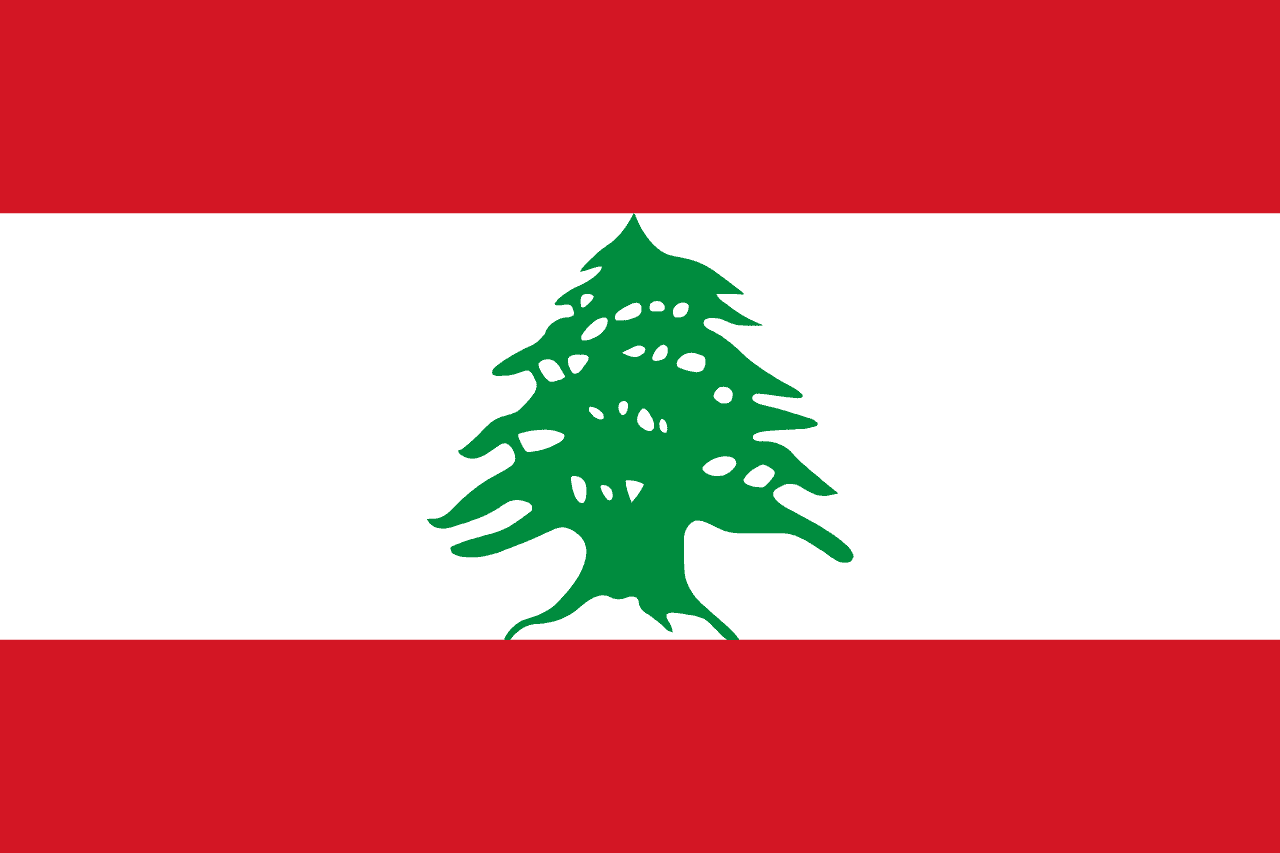
Lebanon
Asia
Two horizontal red stripes separated by a white stripe twice their width, with a green cedar tree centered on the white stripe, representing the strength, purity, and eternal heritage of the 'Land of the Cedars.'
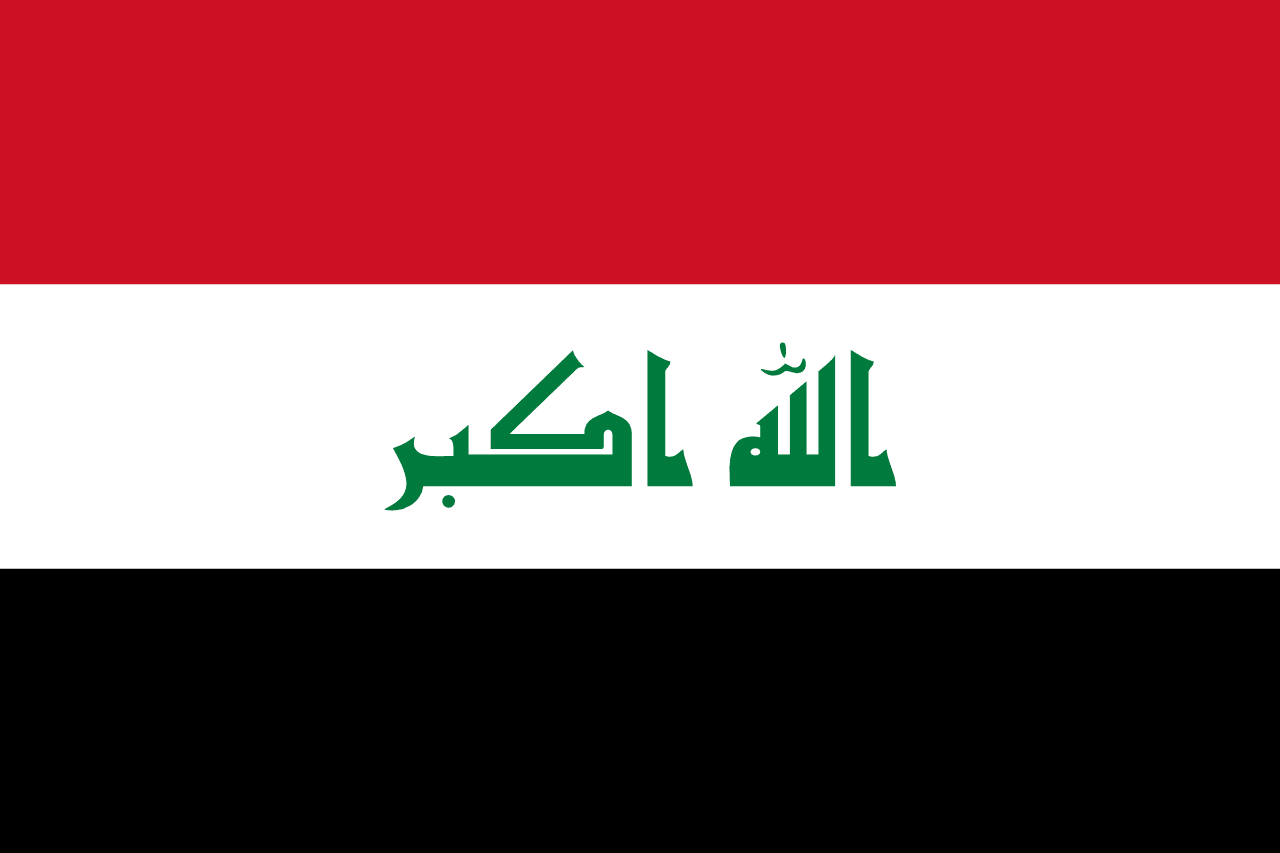
Iraq
Asia
Three horizontal stripes of red, white, and black (Pan-Arab colors) with 'Allahu Akbar' (God is Greatest) written in green Arabic Kufic script across the white stripe, representing Arab unity, Islamic faith, and Iraqi sovereignty.

Cyprus
Europe
A white field with a copper-colored silhouette of the island of Cyprus and two green olive branches below, representing peace, the island's geographic identity, and its ancient association with copper mining and olive cultivation.
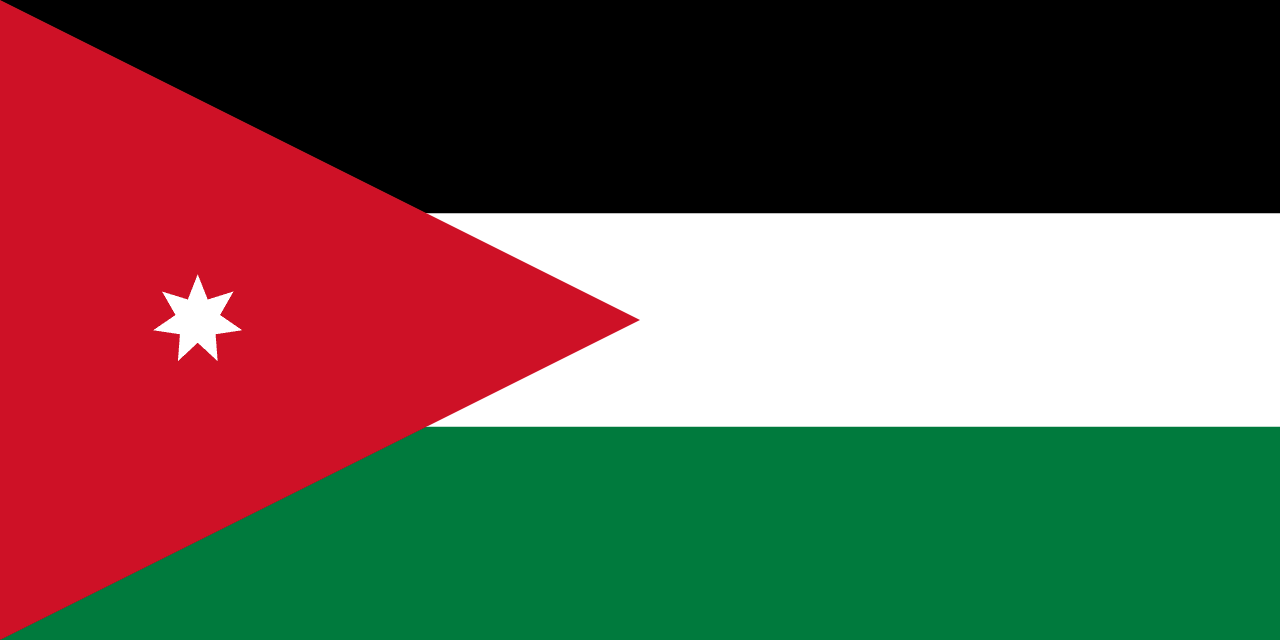
Jordan
Asia
Three horizontal stripes of black, white, and green with a red triangle on the hoist side containing a seven-pointed white star, representing the Arab Revolt heritage and the Hashemite Kingdom's role as guardian of Islamic holy sites.
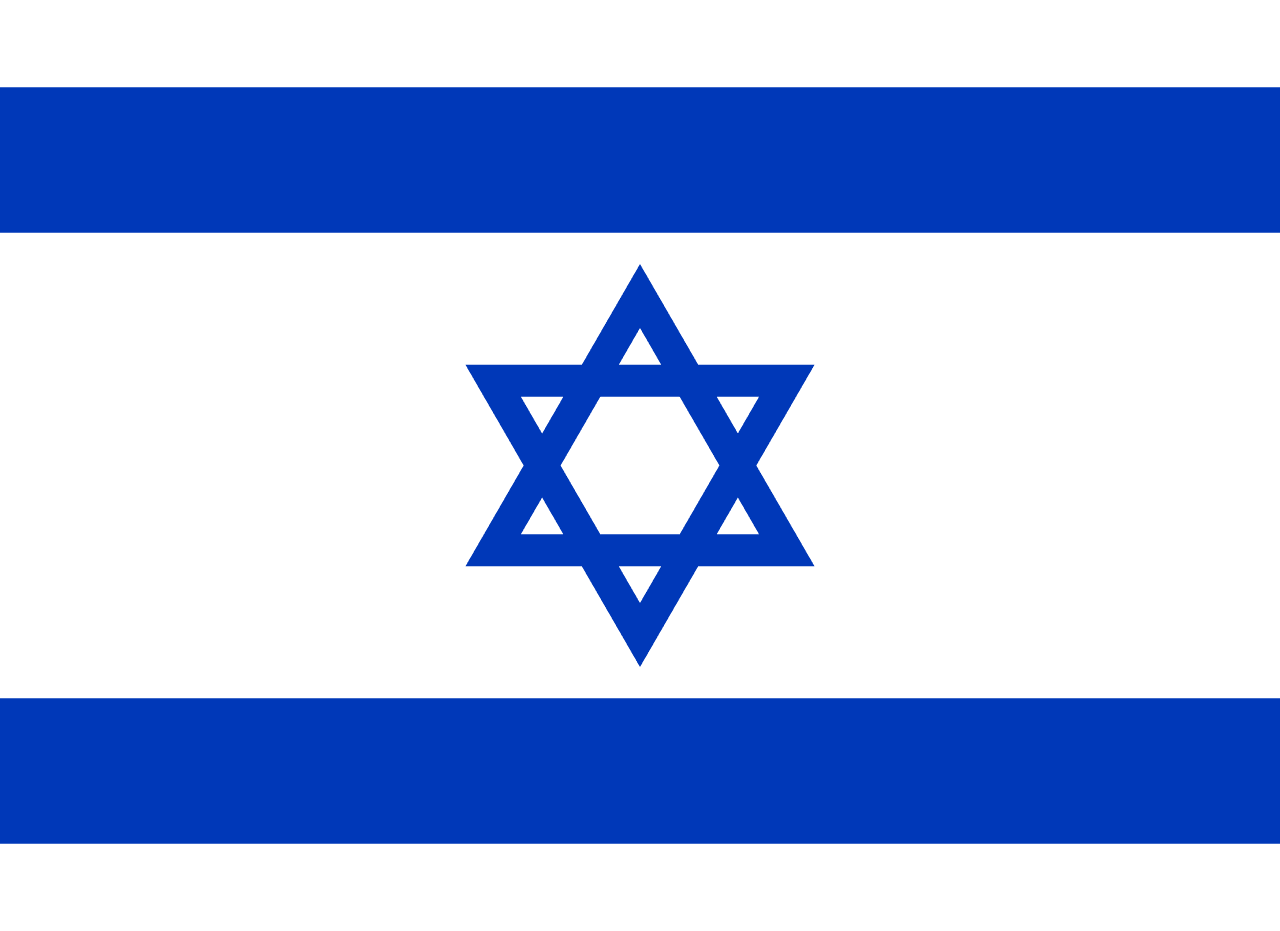
Israel
Asia
A white field with two horizontal blue stripes near the top and bottom edges and a blue Star of David (Magen David) in the center, based on the design of the traditional Jewish prayer shawl (tallit) and representing Jewish heritage and the modern State of Israel.

Turkey
Asia
The flag of Turkey is bold and simple in design with a red field with a white crescent moon and five-pointed star slightly off-center toward the hoist. This represents the blood of martyrs who died for the country, Islam, and the guidance of the state, with symbols that have ancient origins in Turkic and Ottoman traditions.